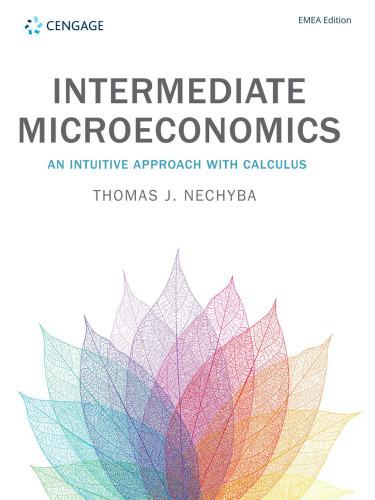2.6 Policy Application: Taxing Goods versus Lump Sum Taxes. In an attempt to reduce the consumption of
Question:
2.6 Policy Application: Taxing Goods versus Lump Sum Taxes. In an attempt to reduce the consumption of sugary drinks, a government places a tax on soft drinks which raises the price from €2 per litre to €4 per litre. Subsequent studies show average individual consumption of sugary drinks falls to 10 litres per month compared to 15 litres before the tax.
A. Putting ‘Litres of sugary drinks per month’ on the horizontal axis and ‘Euros of other consumption’ on the vertical axis, illustrate the average consumer’s budget line before and after the tax is imposed. You can denote income by I.
a. How much tax revenue is the government collecting per month from the average consumer? Illustrate this as a vertical distance on your graph. Hint: If you know how much they are consuming after the tax and how much in other consumption this leaves them with, and if you know how much in other consumption they would have had if they had consumed that same quantity before the imposition of the tax, the difference between these two other consumption quantities must be equal to how much the average consumer paid in tax.
b. Assume that the tax on sugary drinks has been contested by the drinks industry. The government are being pushed to remove the tax but have to find a way to raise the same tax revenue that was yielded by the tax on sugary drinks. A proposal is made to ask consumers to pay exactly the amount they paid in sugary drinks taxes as a monthly lump sum payment. Ignoring for the moment the difficulty of gathering the necessary information for implementing this proposal, how would this change the average consumer’s budget constraint?
B. State the equations for the budget constraints you derived in 2.6A
(a) and 2.6A(b), letting sugary drinks be denoted by x1 and other consumption by x2
Step by Step Answer:

Intermediate Microeconomics: An Intuitive Approach With Calculus
ISBN: 116465
1st Edition
Authors: Thomas Nechyba






